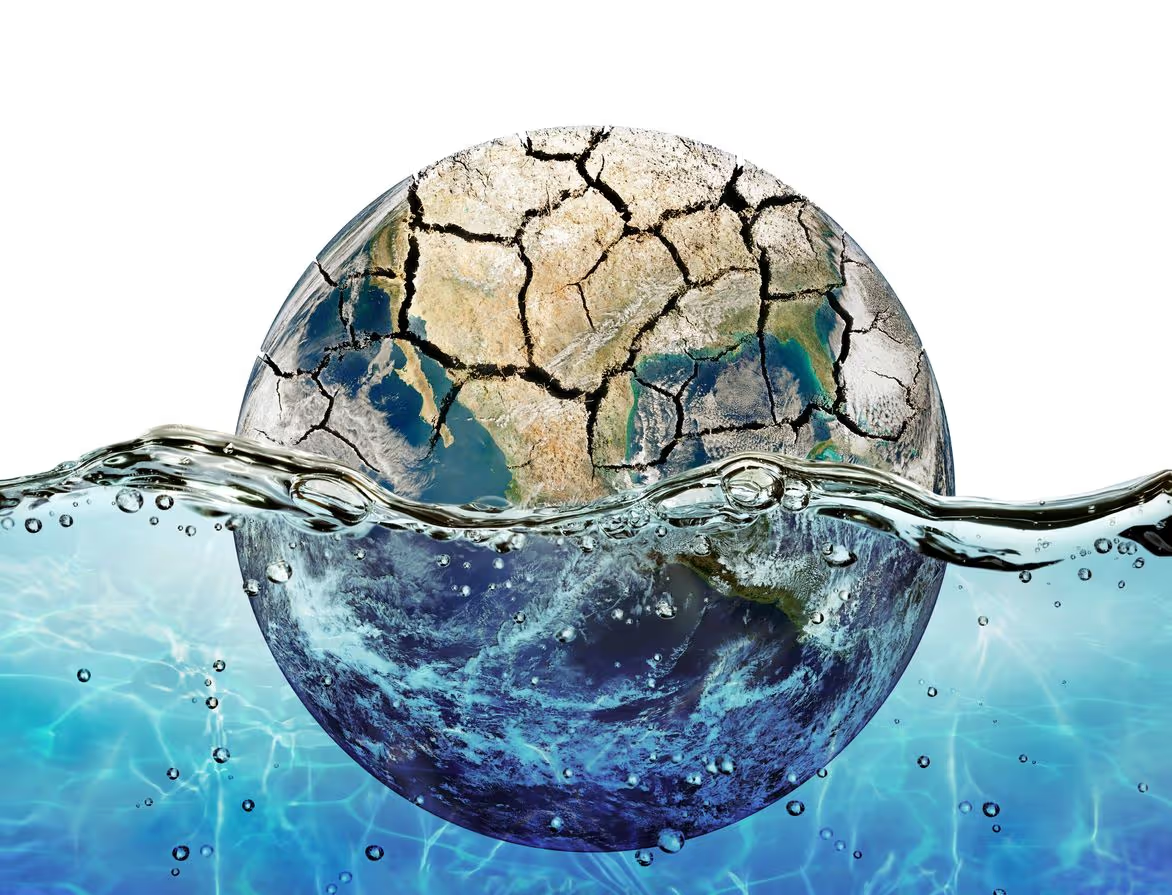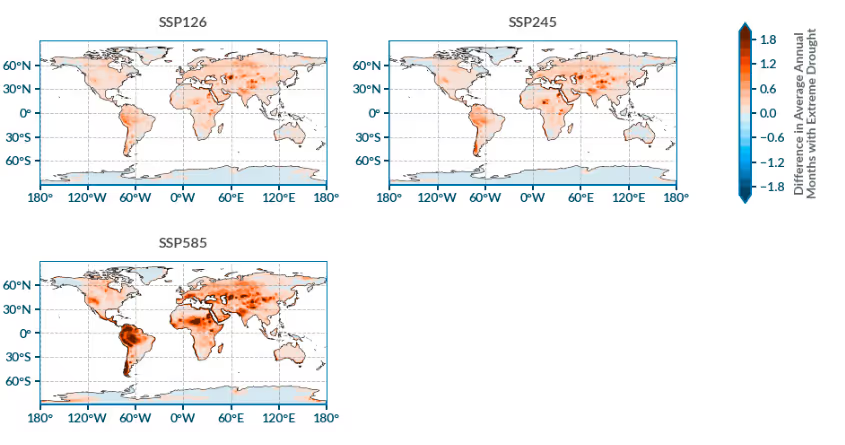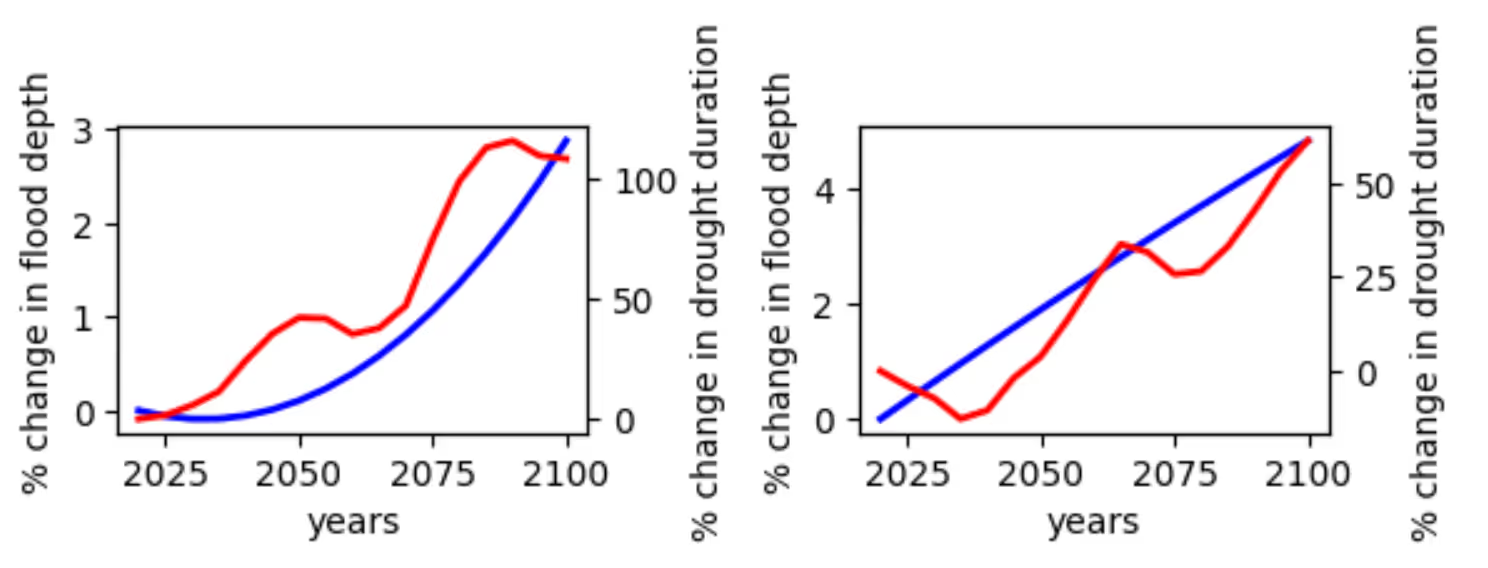
By Marco Maneta, Principal Scientist and Hydrologist, Jupiter
At first glance, droughts and floods appear to be opposite natural processes that cannot occur simultaneously. But delve deeper, and you'll discover that they are siblings, birthed by a common parent – a warming atmosphere. Just as siblings with dissimilar personalities can coexist in the same family, a region can simultaneously grapple with drought and be susceptible to flooding.
Understanding the Family Dynamics
The distinguishing trait between these two siblings lies in their timing. A region experiences a drought after unusually dry conditions have persisted for a relatively long time. Floods occur anytime water covers land that is typically dry; like the floodplain adjacent to a river, which can happen in a short period of time. Floods can then occur as acute events within a longer-term dry cycle. And climate change is making these dry cycles longer and episodic floods more intense. As climate change nurtures their parent, the warming atmosphere, droughts lengthen while floods intensify.
The Parental Influence: Atmospheric Warming
As the atmosphere warms, its capacity to hold water vapor grows exponentially. Each additional degree of warming puts strain on the amount of water available for use because more of it evaporates instead of remaining in the ground, rivers, and reservoirs we depend on for agriculture and drinking. Put simply, a warmer atmosphere can accelerate drying and increase the duration of droughts while simultaneously using the abundance of evaporated water to generate intense storms and inundation.
The Global Family Portrait
Across the globe, different regions have unique interactions between drought and flood, influenced by their ever-warming parent. Figure 1 portrays global trends in maximum annual streamflows under different greenhouse gas emission scenarios and unveils some consistent patterns. Central Europe, the northeastern U.S., and tropical Africa for instance, may witness flooding more frequently due to increased precipitation and storms. Conversely, southern Europe and central Russia might feel the impact of drought more intensely, as increased evaporation and dwindling snowpacks reduce streamflows.
.png)
A warmer atmosphere and its ability to extract more water from the land surface via evaporation also partially explain why we should expect an increasing drought risk in many of the same regions. Figure 2 shows the change in the number of months under extreme drought that we should expect on average every year across the globe between 2020 and 2100 under the same three emission scenarios used in Figure 1. In some regions, the risk of floods can increase even during periods of below-average annual precipitation if precipitation is delivered through more intense storm events. In other regions, drought is driven by an increase in evaporation rather than by declines in precipitation, which is why drought risk can increase even in areas where precipitation is also projected to increase.

A key aspect of these alterations in the water cycle is that many regions of the world where flood risk is projected to increase will have more intense flood events interspersed between prolonged dry periods, which will pose significant water management challenges.
Urban Centers: The Siblings Play Together
While cities all over the globe have made strides in reducing per-capita water demand, many face the combined mischief of both siblings due to depleting water sources and outdated flood defenses. Take for example, the cities of Sacramento and Paris.
Already familiar with the flood sibling, Sacramento now also faces drought's intensifying grip, with predictions indicating a doubling in the duration of extreme drought conditions by 2100.
Sacramento already experiences frequent minor floods, and the potential for severe floods, from annual streamflow maxima that overtop levees. Now, the city also faces the intensifying grip of drought, with predictions indicating a doubling in the duration of extreme drought conditions by 2100. If warming trends continue, maximum annual flow depths in the channel will increase throughout the end of the century due to faster snowmelt. On average, the 100-year flood is expected to crest 3% higher throughout the century with respect to the 2020 baseline (Figure 3, left panel). Simultaneously, the average number of months per year under extreme drought conditions is expected to double from 2020 to 2100.
The Seine River is projected to experience deeper floods, while the entire central European region braces for 50% longer bouts of drought.
Paris is also set to witness the rising influence of both siblings. With a steady increase in the depth of the 100-yr flood event in the Seine River (Figure 3, right panel) caused by more intense fall and winter storms during wet years. France and most of western and central Europe, is expected to see a 50% increase in the average number of months under extreme drought through the end of the century, which can impact summer flows and the navigability of their major rivers like the Rhine in the summer of 2018 and 2022. Increases in urban and agricultural water demand associated with droughts will compound water supply problems.

In the grand narrative of our planet's changing climate, droughts and floods aren't mutually exclusive events. They are siblings molded by their parent, a warming atmosphere. As they play out their roles in tandem, regions across the world need to prepare for their joint impact. Addressing this drought-flood duality demands not only a thorough understanding of their dynamics, but strategic planning to ensure resilience as those dynamics exponentially increase in frequency and intensity in the years to come.
Marco Maneta is a Principal Scientist and Hydrologist at Jupiter Intelligence.
.webp)
